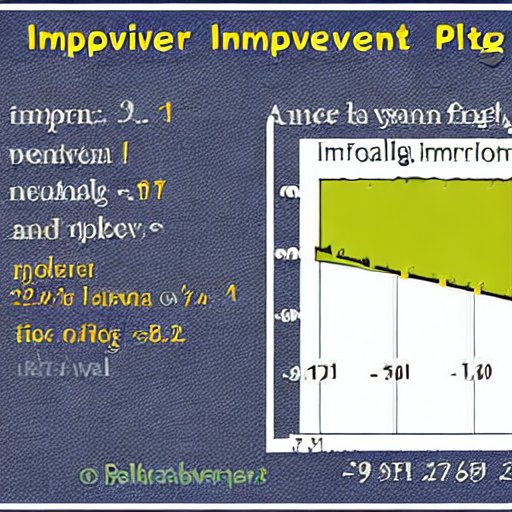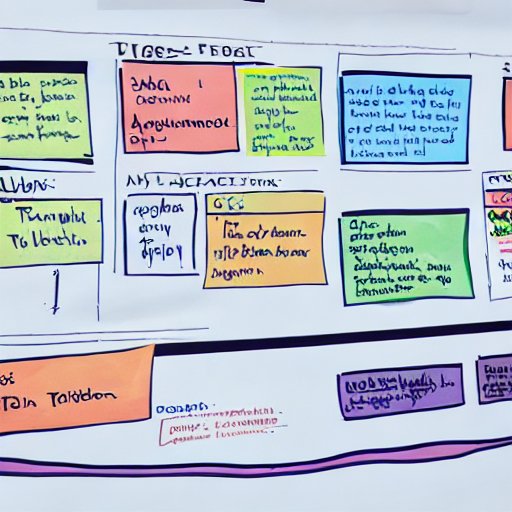What is “Crashing” in Project Management? In project management, “crashing” is a technique used to shorten the project schedule by increasing the resources (usually personnel and/or money) allocated to the project. It’s used when the project is behind schedule and the project team needs to speed up the work to meet the original deadline. Crashing can be a costly option as it often requires adding resources and can result in increased labour costs, but can be a necessary measure if the project is behind schedule and there’s no other option to meet the project deadline.
It is worth mentioning that this strategy has a cost, usually additional expenses in terms of money and resources, but is a useful option when the project is running behind and the deadline can’t be postponed.
To correctly understand and answer the question “What is “Crashing” in Project Management” and successfully implement crashing in a translation project management process, the following steps should be followed:
Identify the critical path
In project management, the critical path is the sequence of tasks that, if delayed, would delay the entire project. Identifying the critical path is an important step in ensuring that the project is completed on time. Here are some steps and advice to help identify the critical path in a translation project management context:
- Break down the project into smaller tasks: Start by breaking down the project into smaller, manageable tasks. This will make it easier to identify the critical path.
- Determine the dependencies between tasks: Identify which tasks depend on the completion of other tasks. These dependencies will help you to identify the critical path.
- Create a project schedule: Use a project management tool or software to create a project schedule. This will help you to visualize the critical path and identify which tasks are on it.
- Identify the tasks with the least amount of float: Tasks on the critical path will have the least amount of float or slack. These tasks are the most critical to the project and will require the most attention.
- Assess the impact of delays: Evaluate the impact of delays to each task on the critical path. If a delay to a task on the critical path will cause a delay to the entire project, that task is considered critical.
- Continuously review the critical path: The critical path can change as the project progresses, so it’s essential to review it regularly to ensure that it’s still accurate.
- Prioritize the critical path tasks: Prioritize the tasks on the critical path and ensure that they are given priority in terms of resources, time and budget allocation.
Keeping these advices in mind, you will be able to identify the critical path accurately and take the necessary steps to ensure that the project is completed on time.
Evaluate the crashing options
Here are some guidelines to consider when evaluating crashing options in project management:
- Identify the critical path: As previously discussed, the critical path is the sequence of tasks that, if delayed, would delay the entire project. Identify the tasks on the critical path that can be accelerated.
- Brainstorm options: Gather a team of relevant stakeholders and brainstorm all possible ways to speed up the critical path tasks. This can include increasing the number of resources working on the tasks, increasing the number of hours worked per day or using more advanced technology.
- Analyze the feasibility: Evaluate each option’s feasibility, considering factors such as resources, time, and money.
- Assess the potential impact: Assess the potential impact of each option on the project, including the project schedule, budget, and the quality of the final product.
- Choose the best option: Select the option that promises the most significant reduction of time for the least amount of cost. The best option should be the one that shortens the project schedule while minimizing additional costs and negative impacts.
- Communicate the decision: Present the option to all stakeholders and make sure they understand the reasoning behind the chosen approach and the potential implications of different options.
- Monitor and Adjust: Regularly monitor the progress of the project and make adjustments as necessary.
It’s important to keep in mind that any change in the project plan should be based on sound analysis, and the final decision should be taken after an evaluation of the pros and cons. It’s also essential to keep the lines of communication open with all stakeholders, including the project team, the client and other external stakeholders.
By following these steps, you will be able to evaluate the crashing options effectively and make the best decision for your project. Keep in mind that crashing should be done with caution and only when necessary, as it may increase costs, create issues with resource allocation, and cause dissatisfaction among team members.
Identify the costs and benefits of each option
Assessing the costs and benefits of each option in terms of resources, time, and money is crucial in order to make an informed decision. Here are several steps to consider when evaluating the costs and benefits of each option:
- Identify the options: Gather a team of relevant stakeholders and brainstorm all possible options for the project.
- Assess the costs: Evaluate the costs associated with each option in terms of resources, time, and money. This includes the costs of materials, labour, equipment, and any other resources that will be required to implement the option.
- Assess the benefits: Evaluate the benefits of each option in terms of the project’s schedule, budget, and quality of the final product. This includes the expected savings in time, cost, and increased efficiency.
- Analyze the trade-offs: Analyze the trade-offs between the costs and benefits of each option. Consider the potential benefits and drawbacks of each option in terms of the project’s schedule, budget, and quality of the final product.
- Choose the best option: Select the option that promises the most significant benefits while minimizing costs.
- Communicate the decision: Present the option to all stakeholders and make sure they understand the reasoning behind the chosen approach and the potential implications of different options.
- Monitor and Adjust: Regularly monitor the progress of the project and make adjustments as necessary.
Keep in mind that not all costs can be quantified in terms of money; some costs, like team morale, can be harder to measure and should be taken into account as well. By considering the costs and benefits in terms of resources, time, and money, project managers can make better-informed decisions that will ultimately benefit the project.
Prioritize the options
One way to prioritize the options in order to make the best use of resources and time is to select the option that promises the most significant reduction of time for the least amount of cost. Here is what you have to do:
- Identify the critical path: This is the sequence of tasks that must be completed on time in order for the project to be completed on schedule. Identifying the critical path helps to focus on the most important tasks that need to be completed on time.
- Determine the time and cost of each option: Assess the time and cost of each option for completing the critical path tasks.
- Compare the options: Compare the time and cost of each option and select the one that promises the most significant reduction of time for the least amount of cost.
- Consider the risks: Consider the potential risks of each option and select the one that has the lowest risk
- Adjust the plan: Adjust the project plan to implement the selected option and communicate the plan to the team.
- Monitor and Adjust: Regularly monitor the progress of the project and make adjustments as necessary.
Project managers can effectively prioritize the options to achieve the most significant reduction of time for the least amount of cost. This not only helps to complete the project on schedule but also helps to achieve this at the lowest possible cost. It’s worth noting that this approach might not be the only answer to prioritize the options as you might need to consider other factors like quality, complexity, stakeholders’ preferences and risks to take the best decision.
Implement the chosen option
Here is how to implement the chosen option properly:
- Communicate the plan: Ensure that the team members are aware of the chosen option, how it is going to be implemented and what changes should be expected.
- Allocate resources: Allocate the necessary resources and make sure that they understand the priority of the task and how they should work to complete them as soon as possible.
- Monitor the progress: Regularly monitor the progress of the critical path tasks and compare it to the schedule.
- Identify and resolve issues: Identify and resolve any issues that arise during the implementation process.
- Review and adjust: Review and adjust the plan as needed to ensure that the critical path tasks are completed on schedule.
Implementing a chosen crashing option and monitoring progress on critical path tasks can be done efficiently by following a set of guidelines. This leads to the successful completion of projects and meeting deadlines.
Re-evaluate the critical path
Re-evaluating the critical path after a crashing option has been applied helps to ensure that the project schedule has been met and that the project is on track to be completed on time. Here are a few steps to follow when re-evaluating the critical path:
- Update the project schedule: Using the updated task durations and dependencies, update the project schedule and recalculate the critical path.
- Review the new critical path: Review the new critical path and ensure that it makes sense and that it is realistic.
- Monitor progress: Monitor progress on the critical path tasks and compare it to the schedule.
- Identify and resolve issues: Identify and resolve any issues that arise during the re-evaluation process.
- Update the project plan: If needed, update the project plan based on the new critical path to ensure that the project will be completed on schedule.
Continuously monitor and adjust
Effective project management involves continuously monitoring progress and making adjustments as necessary to ensure the project stays on track. The following steps can be used to ensure proper continuous monitoring and adjustment:
- Set up a system for monitoring progress: Establish a system for monitoring the progress of the project and its tasks, such as regular progress reports and status meetings.
- Track progress regularly: Track progress regularly and compare it to the project schedule and plan.
- Identify and address issues: Identify any issues or risks that arise during the monitoring process and address them as soon as possible.
- Communicate with team members: Regularly communicate with team members to ensure that they are aware of the project’s progress and any issues that have been identified.
- Make adjustments as necessary: Make adjustments to the project plan or schedule as necessary to keep the project on track.
- Continuously re-evaluate critical path: As the project progresses, continuously re-evaluate the critical path and adjust it if necessary to ensure on-time completion.
Conclusion for the question “What is “Crashing” in Project Management”
In conclusion, what is “crashing” in project management? it refers to the process of reducing the project’s duration by accelerating the completion of tasks on the critical path. By using the steps outlined in this article, project managers can effectively identify the critical path, evaluate crashing options, prioritize them and implement the best option, monitor progress, and make adjustments as necessary to ensure the project is completed on schedule.
At Slavis Translations, we specialize in providing professional project management services for the translation industry and we definitely know the answer to the question “What is “Crashing” in Project Management”. Our team of experts has the knowledge and experience needed to help you successfully complete your projects on time and within budget. Contact us today to learn more about how we can help you achieve your business goals. Trust our team to handle the project management of your projects and you’ll see the difference in the results.




